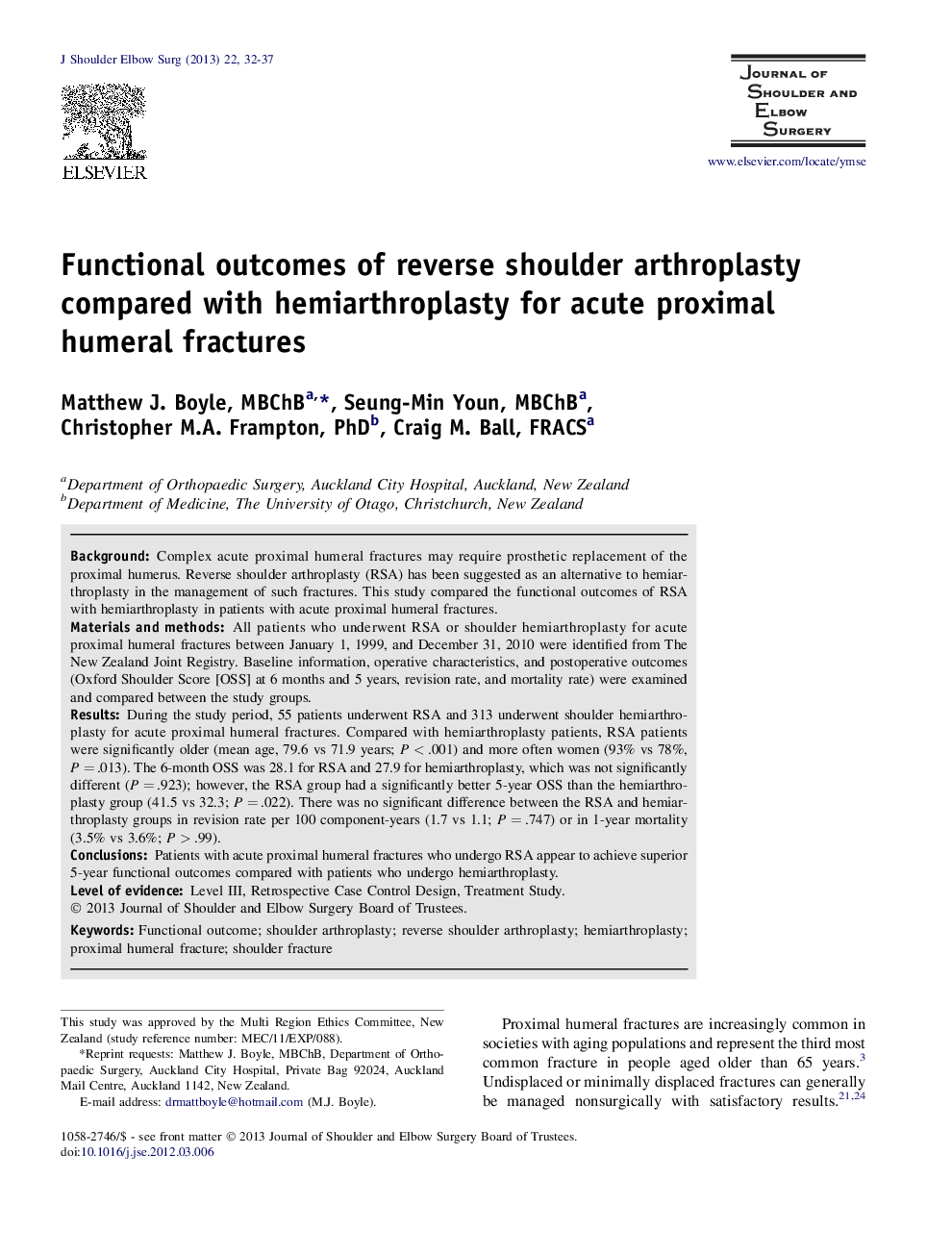| Article ID | Journal | Published Year | Pages | File Type |
|---|---|---|---|---|
| 4075392 | Journal of Shoulder and Elbow Surgery | 2013 | 6 Pages |
BackgroundComplex acute proximal humeral fractures may require prosthetic replacement of the proximal humerus. Reverse shoulder arthroplasty (RSA) has been suggested as an alternative to hemiarthroplasty in the management of such fractures. This study compared the functional outcomes of RSA with hemiarthroplasty in patients with acute proximal humeral fractures.Materials and methodsAll patients who underwent RSA or shoulder hemiarthroplasty for acute proximal humeral fractures between January 1, 1999, and December 31, 2010 were identified from The New Zealand Joint Registry. Baseline information, operative characteristics, and postoperative outcomes (Oxford Shoulder Score [OSS] at 6 months and 5 years, revision rate, and mortality rate) were examined and compared between the study groups.ResultsDuring the study period, 55 patients underwent RSA and 313 underwent shoulder hemiarthroplasty for acute proximal humeral fractures. Compared with hemiarthroplasty patients, RSA patients were significantly older (mean age, 79.6 vs 71.9 years; P < .001) and more often women (93% vs 78%, P = .013). The 6-month OSS was 28.1 for RSA and 27.9 for hemiarthroplasty, which was not significantly different (P = .923); however, the RSA group had a significantly better 5-year OSS than the hemiarthroplasty group (41.5 vs 32.3; P = .022). There was no significant difference between the RSA and hemiarthroplasty groups in revision rate per 100 component-years (1.7 vs 1.1; P = .747) or in 1-year mortality (3.5% vs 3.6%; P > .99).ConclusionsPatients with acute proximal humeral fractures who undergo RSA appear to achieve superior 5-year functional outcomes compared with patients who undergo hemiarthroplasty.
